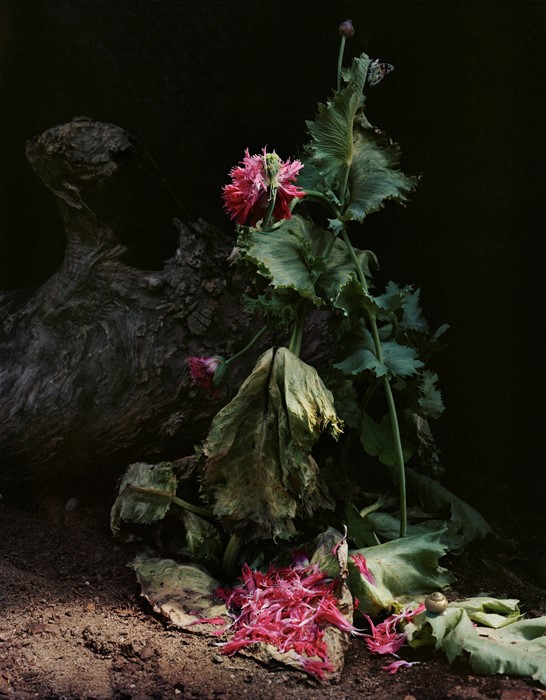Sharon Core grows rare blooms from seed in order to painstakingly recreate the arrangements of the masters
What lengths would you go to capture the vivid beauty of a painting you loved – but with real, living objects to replace the brush strokes? For New York-based artist Sharon Core, there are few measures that are not worthwhile. Working out of a studio which is “part garden, kitchen, geodesic dome landscape and tabletop photography studio. It takes over everything,” Core constructs magical worlds the likes of which the world’s most talented botanists would be hard-pressed to recreate.
What’s more, she does so in order to capture them on film, injecting them with the depth and vibrancy of the old masters. “It’s become a great pleasure,” Core explains, of gardening. “I encourage everyone to try.” And when she’s finished with the arrangements? “The flowers get composted to grow more flowers.” As her work is exhibited in a show at North Carolina’s Tracey Morgan Gallery, the artist shares more about her rigorous and captivating practice.

On her first powerful encounter with a floral still life…
“In 1983 at 18 years old, I bought a record album – Power, Corruption, and Lies by New Order. The album’s cover, a brilliant Fantin-Latour with a repro colour bar, was all about recontextualising beauty, nostalgia, romance, and the often overlooked symbolic power of flowers.”
On the origin of her love of plants…
“I began cultivating plants in order to recreate the historic still life paintings of Raphaelle Peale in my series Early American. Through growing and tending to these early strains of vegetables and fruits, I developed an ongoing interest in horticulture and the life cycle of the green world.”

On the relentless pursuit of authenticity in her work…
“I have researched and grown very many heirloom flowers, fruits and vegetables both from seed and from bulbs and rhizomes. I do this in order to recreate an authentic period specimen that will have the right character. My latest photographs from Understory, are photographed inside a human-scaled terrarium that I’ve constructed inside of a geodesic dome – a kind of bio-dome I use as a studio. There I have created a natural world with a selection of plants and creatures – all alive. Nothing is fake or photoshopped.”
On her favourite plant to work with…
“The papaver somniferum, or opium poppy, is the most beautiful and amazing of all. It starts as a tiny edible seed and a tiny sprout and grows into a glorious large plant with large dramatic blue green leaves, also edible as salad, on twisting undulating stalks. They have an immense variety of blooms – some with fringing petals, some like peonies, in a multitude of colours. The dramatic blooms last a day or two and then fall off, leaving the pod which then dries and splits, scattering hundreds of new seeds. Flower paintings of the Dutch Baroque period loved to use these for their drama and curves.”

Sharon Core runs until September 22, 2018, at Tracey Morgan Gallery, North Carolina.






